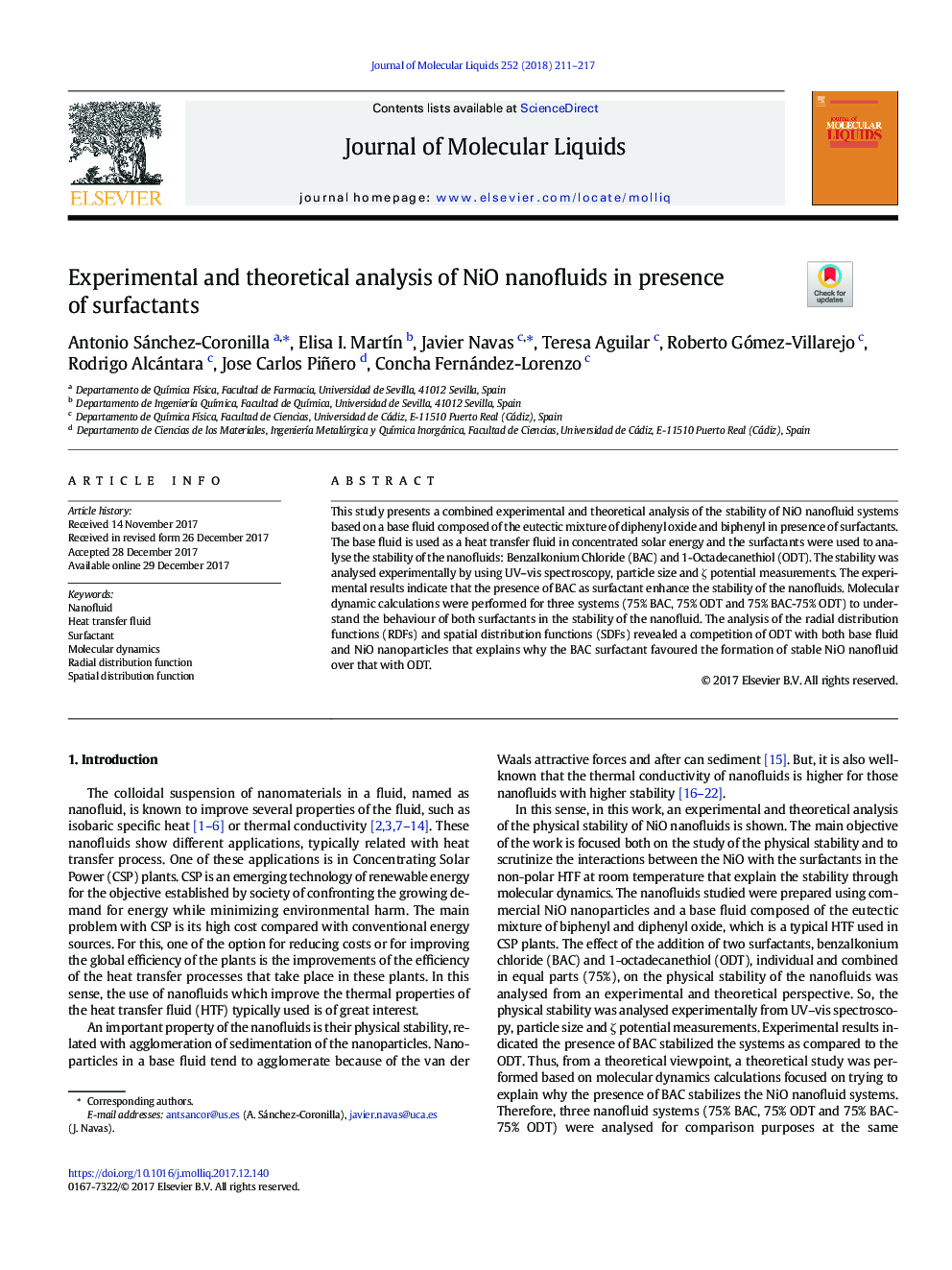| Article ID | Journal | Published Year | Pages | File Type |
|---|---|---|---|---|
| 7843243 | Journal of Molecular Liquids | 2018 | 7 Pages |
Abstract
This study presents a combined experimental and theoretical analysis of the stability of NiO nanofluid systems based on a base fluid composed of the eutectic mixture of diphenyl oxide and biphenyl in presence of surfactants. The base fluid is used as a heat transfer fluid in concentrated solar energy and the surfactants were used to analyse the stability of the nanofluids: Benzalkonium Chloride (BAC) and 1-Octadecanethiol (ODT). The stability was analysed experimentally by using UV-vis spectroscopy, particle size and ζ potential measurements. The experimental results indicate that the presence of BAC as surfactant enhance the stability of the nanofluids. Molecular dynamic calculations were performed for three systems (75% BAC, 75% ODT and 75% BAC-75% ODT) to understand the behaviour of both surfactants in the stability of the nanofluid. The analysis of the radial distribution functions (RDFs) and spatial distribution functions (SDFs) revealed a competition of ODT with both base fluid and NiO nanoparticles that explains why the BAC surfactant favoured the formation of stable NiO nanofluid over that with ODT.
Keywords
Related Topics
Physical Sciences and Engineering
Chemistry
Physical and Theoretical Chemistry
Authors
Antonio Sánchez-Coronilla, Elisa I. MartÃn, Javier Navas, Teresa Aguilar, Roberto Gómez-Villarejo, Rodrigo Alcántara, Jose Carlos Piñero, Concha Fernández-Lorenzo,
